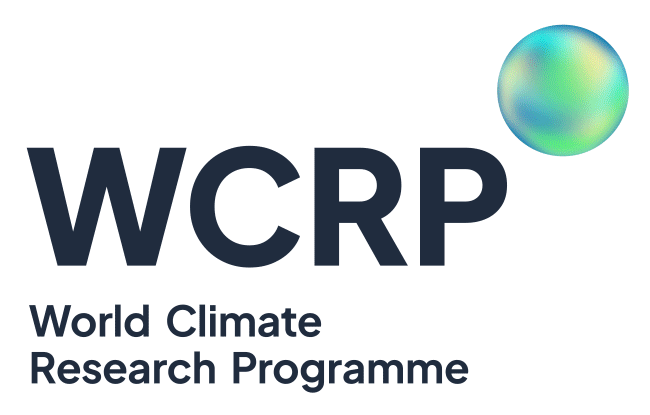Agenda and Presentations
For the agenda, click here.
November 2, 2016
Debating model hierarchies
- V. Balaji (Princeton University) - Welcome
- Isaac Held (NOAA/GFDL) - Simulation vs Understanding
- Tim Palmer (University of Oxford)- The Hierarchical Paradigm for Climate Science: Fit for purpose?
Climate sensitivities and feedbacks (Chairs: Chia-Ying Lee / Xavier Levine)
- Bjorn Stevens (Max Planck Institute): Coupled radiative convective equilibrium simulations with explicit and parameterized convection (Invited talk)
- Andrew Gettelman (NCAR): Constraining the optimized random walk of cloud modeling: Idealized frameworks in the Community Earth System Model for Parameterization Development and Understanding
- Joy Monteiro (Stockholm University): The Climate Modelling Toolkit (CliMT)
- Brian Medeiros: (NCAR): Investigating the role of clouds in the climate system through the CESM modeling hierarchy
- Leo Donner (GFDL/NOAA): Physical process realism and model hierarchies
November 3, 2016
Tropical convection and RCE (Chairs: Spencer Hill / Penelope Maher ; Tim Cronin / Allison Wing)
- Michela Biasutti (Columbia University): TRAC-MIP: Tropical Rain bands with an Annual cycle and Continent - Model Intercomparison Project (Invited talk)
- Sandrine Bony (LMD-IPSL, CNRS): Thermodynamic control of anvil-cloud amount
- Adam Sobel (Columbia University): The Madden-Julian oscillation in idealized and comprehensive models
- Timothy Merlis (McGill University): Carbon dioxide's direct weakening of the tropical circulation: from comprehensive coupled climate models to axisymmetric Hadley cell theory
- Eric Maloney (Colorado State University): Understanding MJO Dynamics Using a Hierarchy of Models and Reanalysis
- Kevin Reed (Stony Brook University): Global Radiative-Convective Equilibrium Frameworks in CAM
- Michael Byrne (ETH Zurich): ITCZ width and its sensitivity to changes in climate: theory and a hierarchy of simulations
- Ruth Geen (University of Exeter): Idealized modelling of the East Asian monsoon
- Daniel Chavas (Purdue University): Tropical cyclone size and structure in a hierarchy of radiative-convective equilibrium simulations
- Masaki Satoh (University of Tokyo): Model hierarchical approaches with NICAM and some ideas for AMIP/APE/RCE inter-comparisons (Invited talk)
Midlatitudes/strat-trop interactions (Chairs: Aditi Sheshadri / Ding Ma ; Stephen Thompson / Pedram Hassanzadeh)
- Alan Plumb (Massachusetts Institute of Technology): What models of different complexity have taught about stratosphere‐ troposphère interactions (Invited talk)
- David Thompson (Colorado State University): Using simple models to understand periodic variability in the extratropical circulation
- Paul O’Gorman (MIT): Moist formulations of the Eliassen-Palm flux and their connection to the surface westerlies in idealized and comprehensive GCM simulations
- Edwin Gerber (New York University): The tropical tropopause layer in an idealized moist model: Tropical vs. extratropical control
- Thomas Birner (Colorado State University):Tropical tropopause temperature control in a hierarchy of models
- Ramalingam Saravanan (Texas A&M University): Beyond downscaling: The utility of regional climate models for mechanistic studies
- Talia Tamarin (Weizmann Institute of science): The poleward deflection of midlatitude strom tracks: from idealized GCMs to comprehensive climate model predictions
- Christopher Fletcher (University of Waterloo): Using a hierarchy of climate models to investigate wave-mean flow interactions
- L. Ruby Leung (Pacific Northwest National Laboratory): Atmospheric rivers in a hierarchy of climate simulations: Resolution sensitivity and impacts of global warming
November 4, 2016
ENSO/coupled modes of variability/oceans/carbon cycle (Chairs: Gabriel Chiodo / Honghai Zhang ; Amanda O’Rourke / Katinka Bellomo)
- Amy Clement (University of Miami): Pacific ENSO-like variability: The timescale-dependent role of ocean dynamics (Invited talk)
- Mark Cane (LDEO): The AMO in very complex models and a very simple model
- Riccardo Farneti (ICTP): Pacific interdecadal variability driven by tropical-extratropical interactions
- Edwin Schneider (George Mason University): Understanding observed climate variability by unifying CGCM dynamics, idealized stochastic models, and observed data using the Interactive Ensemble CGCM
- Amanda O’Rourke (University of Michigan): Energetics of the ocean surface at low frequencies in GFDL's CM2-O model hierarchy
- Mick Follows (Massachusetts Institute of Technology): Hierarchical approaches to interpreting and modeling the global carbon cycle (Invited talk)
- Robin Tokmakian (Naval Postgraduate School): How to build a traceable model hierarchy
- John Dunne (NOAA/GFDL): GFDL’s hierarchy of ocean biogeochemical comprehensiveness for Earth System Modeling
- Laure Zanna (University of Oxford): Ocean heat uptake processes and uncertainty
- Richard Neale (NCAR): Conclusion inconsistencies when testing physics settings in multiple model configurations (Part 1)
Conclusion inconsistencies when testing physics settings in multiple model configurations(Part 2)
Climate sensitivity redux (Chairs: Martin Singh / Ying Li)
- Marika Holland (NCAR): Investigating Antarctic sea ice change using experiments with a hierarchy of model coupling (Invited talk)
- Antje Weisheimer (Oxford University & ECMW): Representing model uncertainty – Hierarchy or heterarchy?
- Francis Codron (Université Pierre et Marie Curie): Climate response to changes in the meridional energy transport: Role of ocean dynamics
- Brian Rose (University at Albany): Robust non-local effects of ocean heat uptake on radiative feedback and subtropical cloud cover
- Xavier Levine (Yale University): A mechanism for the response of the zonally asymmetric subtropical hydrologic cycle to global warming in idealized and comprehensive climate models
- Paulo Ceppi (University of Reading): Clouds and the atmospheric circulation response to warming
- Gabriel Chiodo (Columbia University): The impact of interactive stratospheric chemistry on climate model sensitivity
Conclusions
- V. Balaji (Princeton University) - Summary


